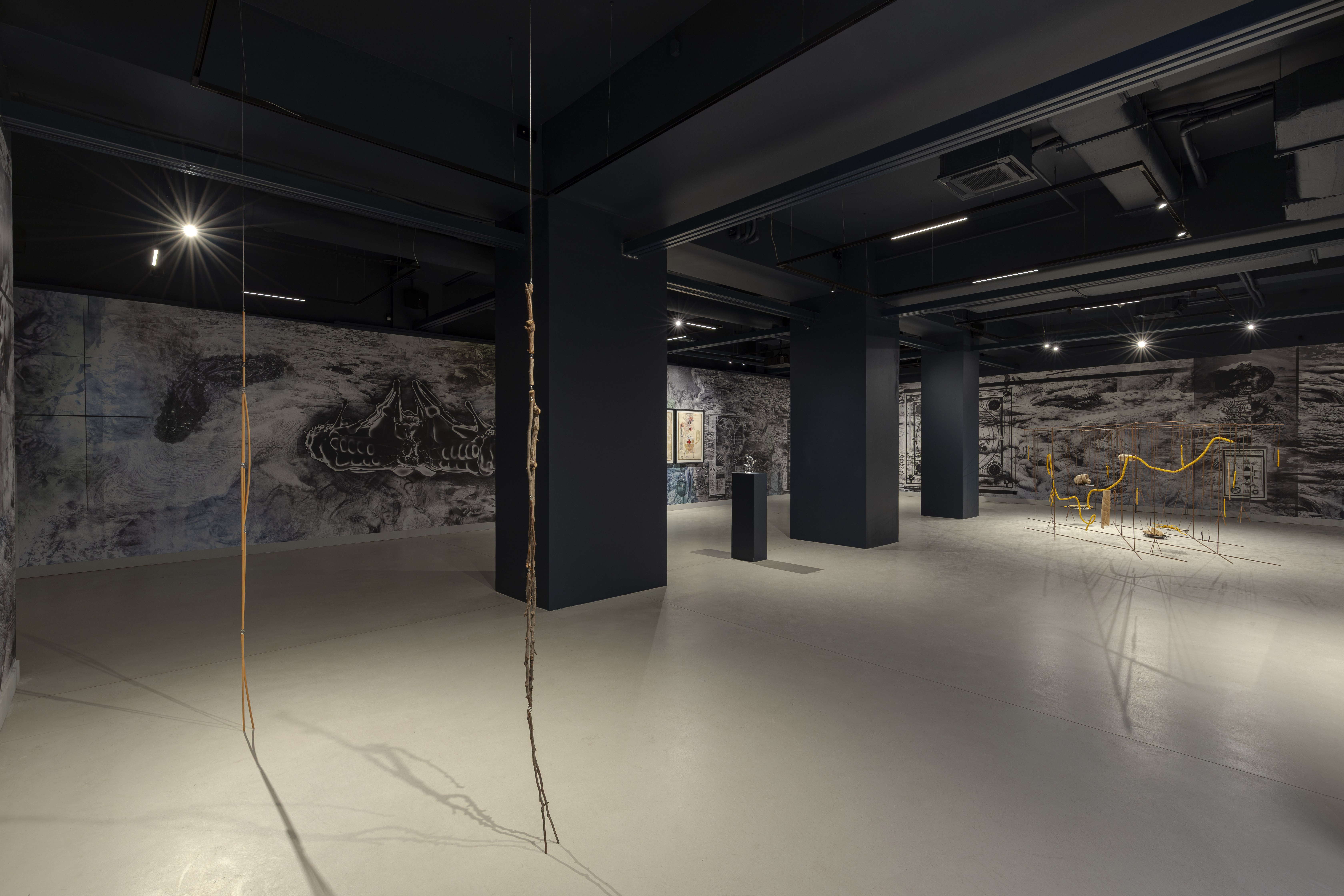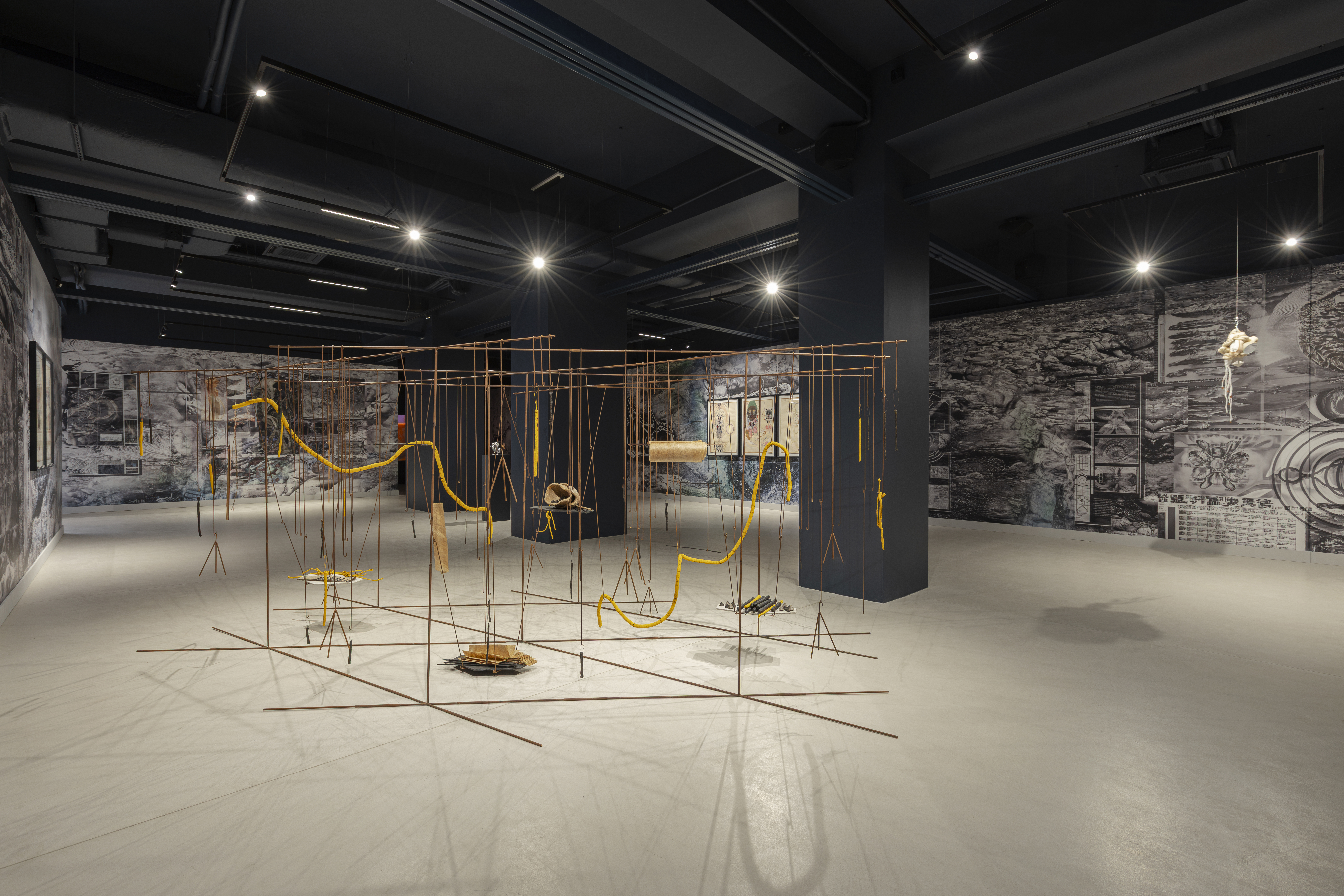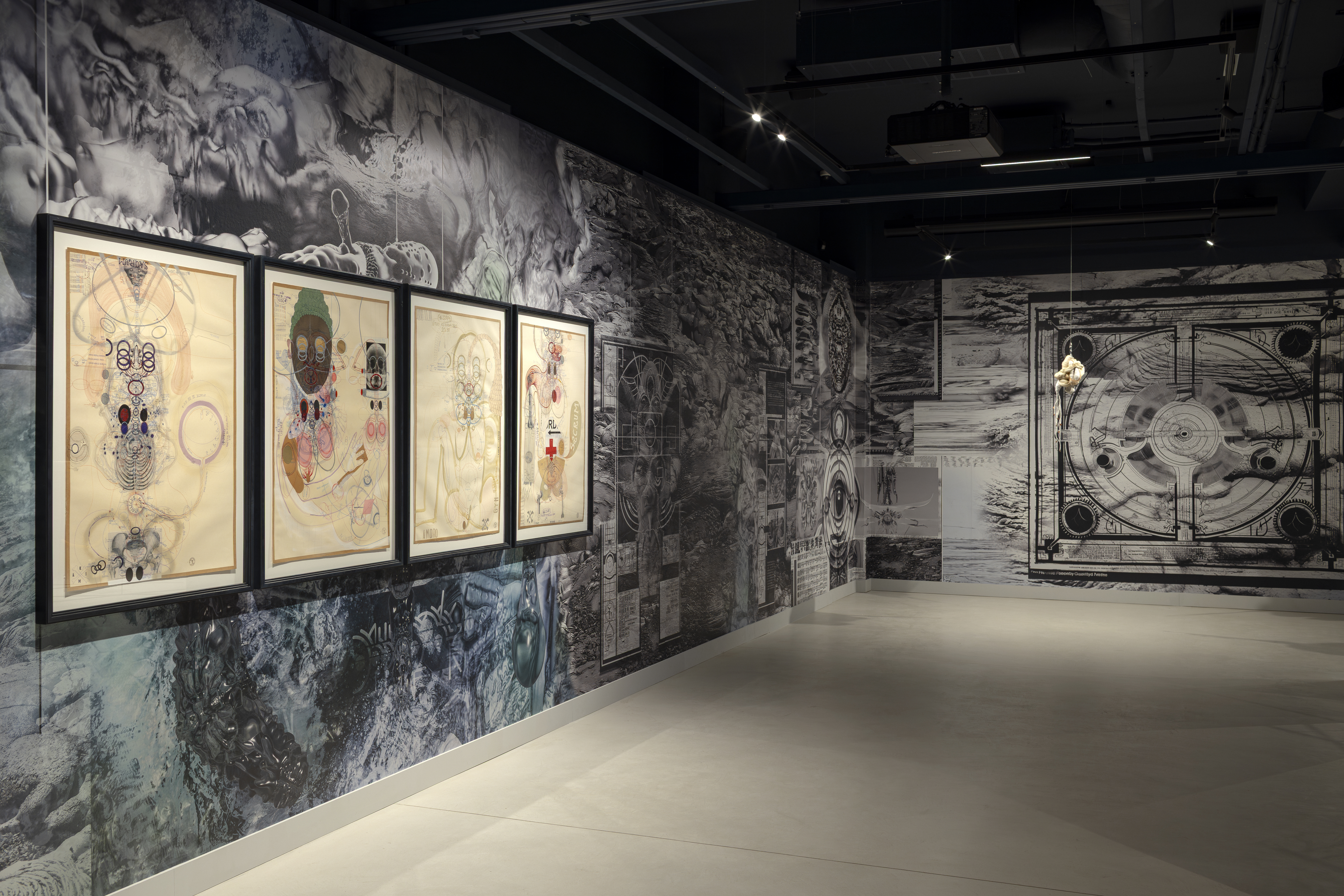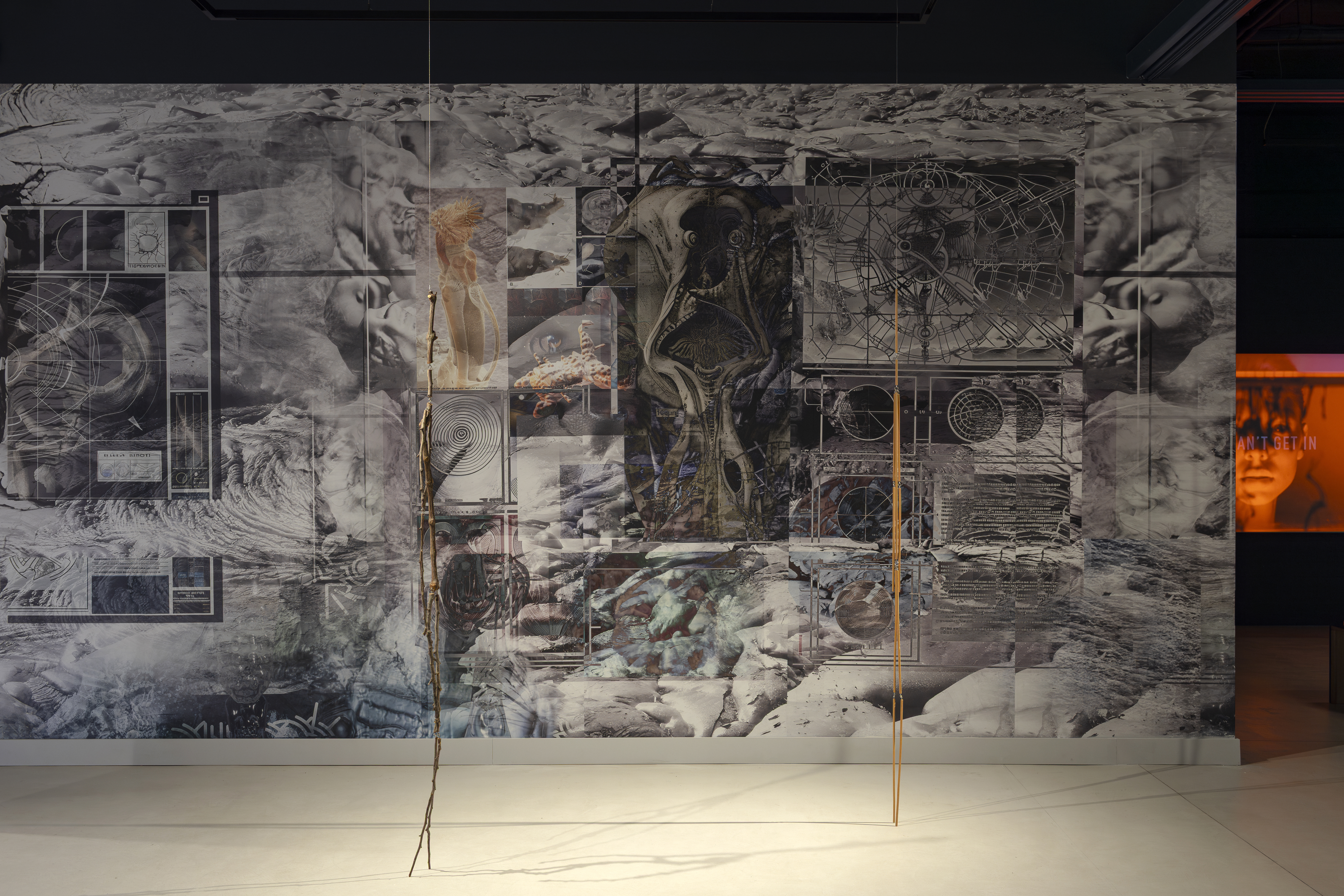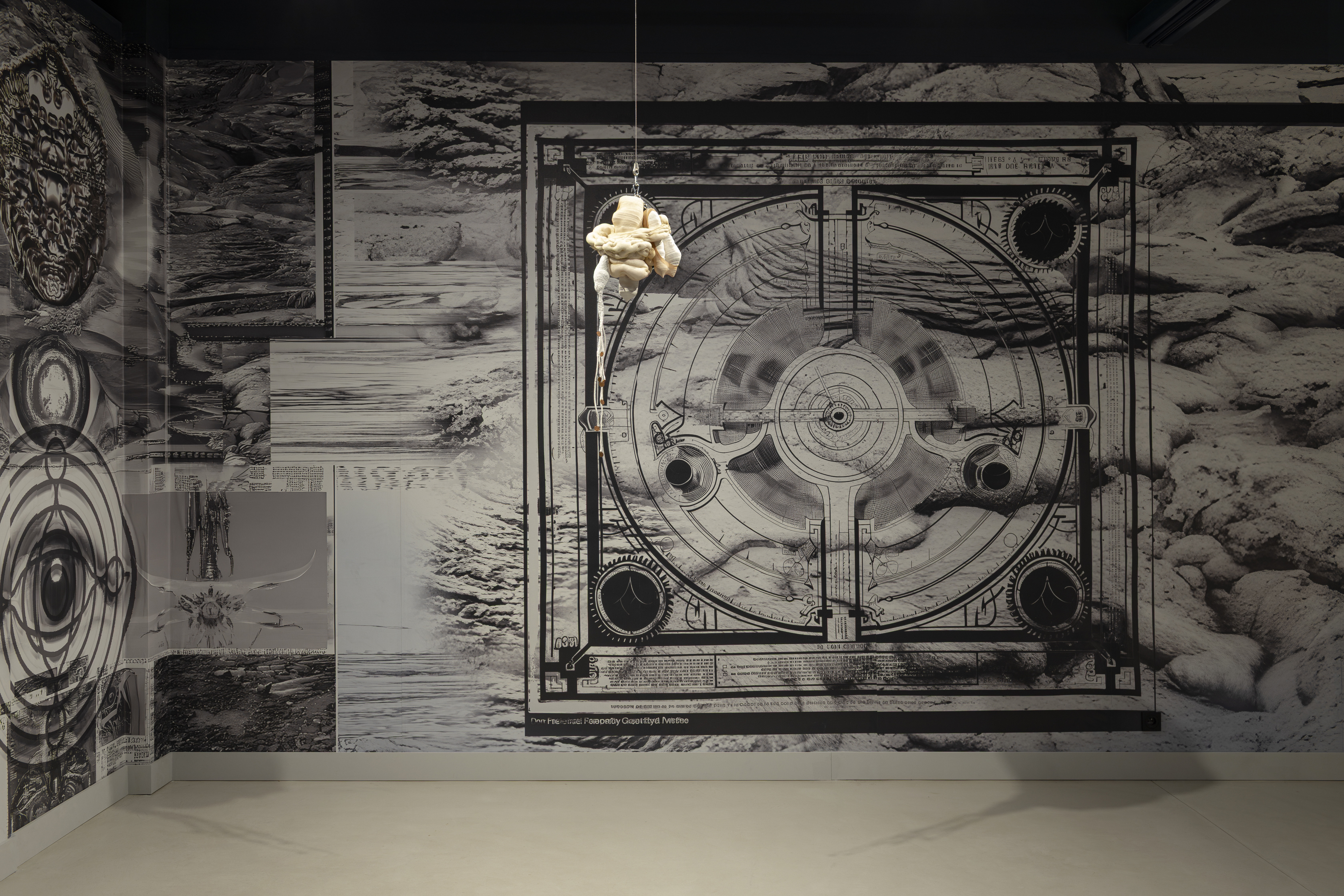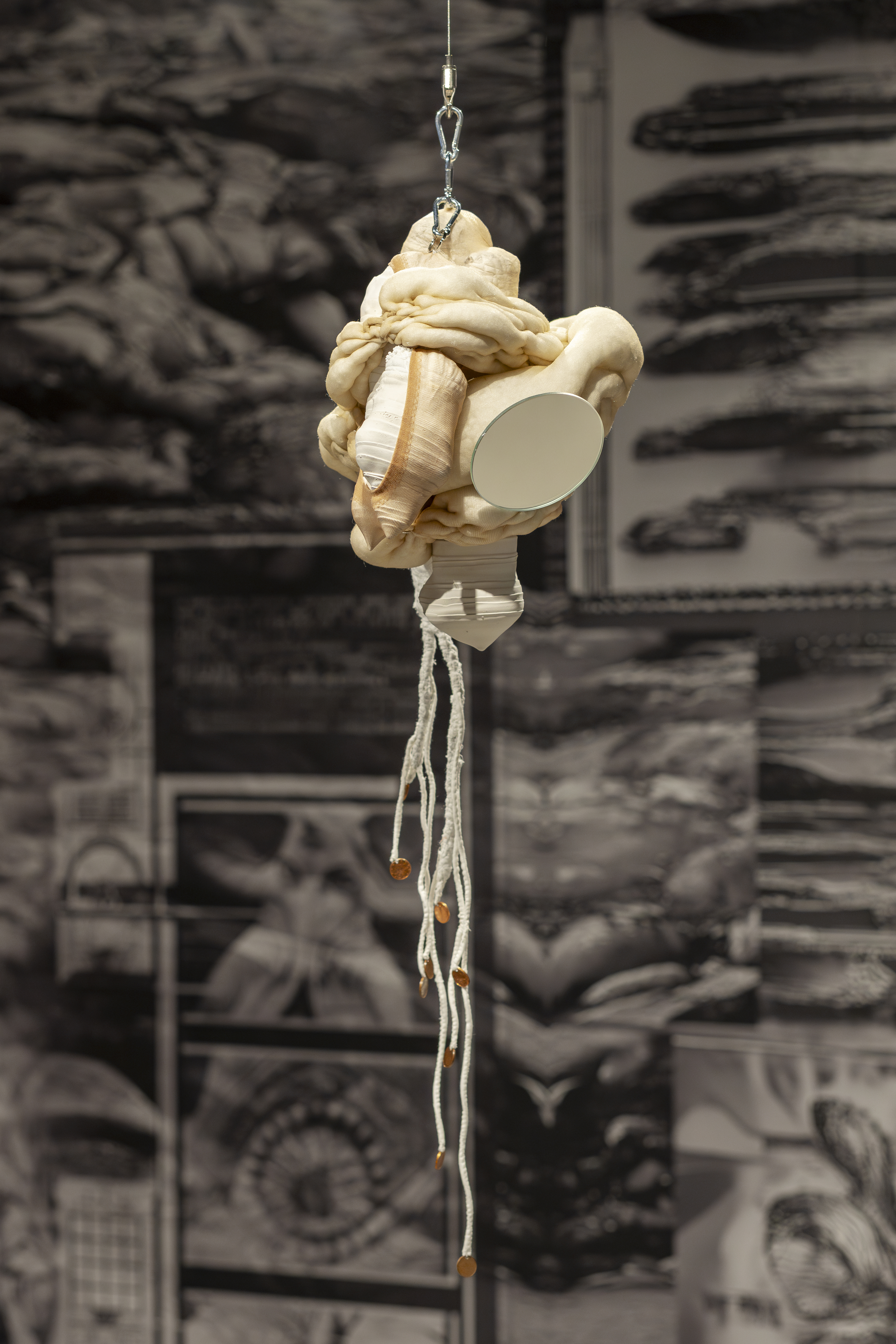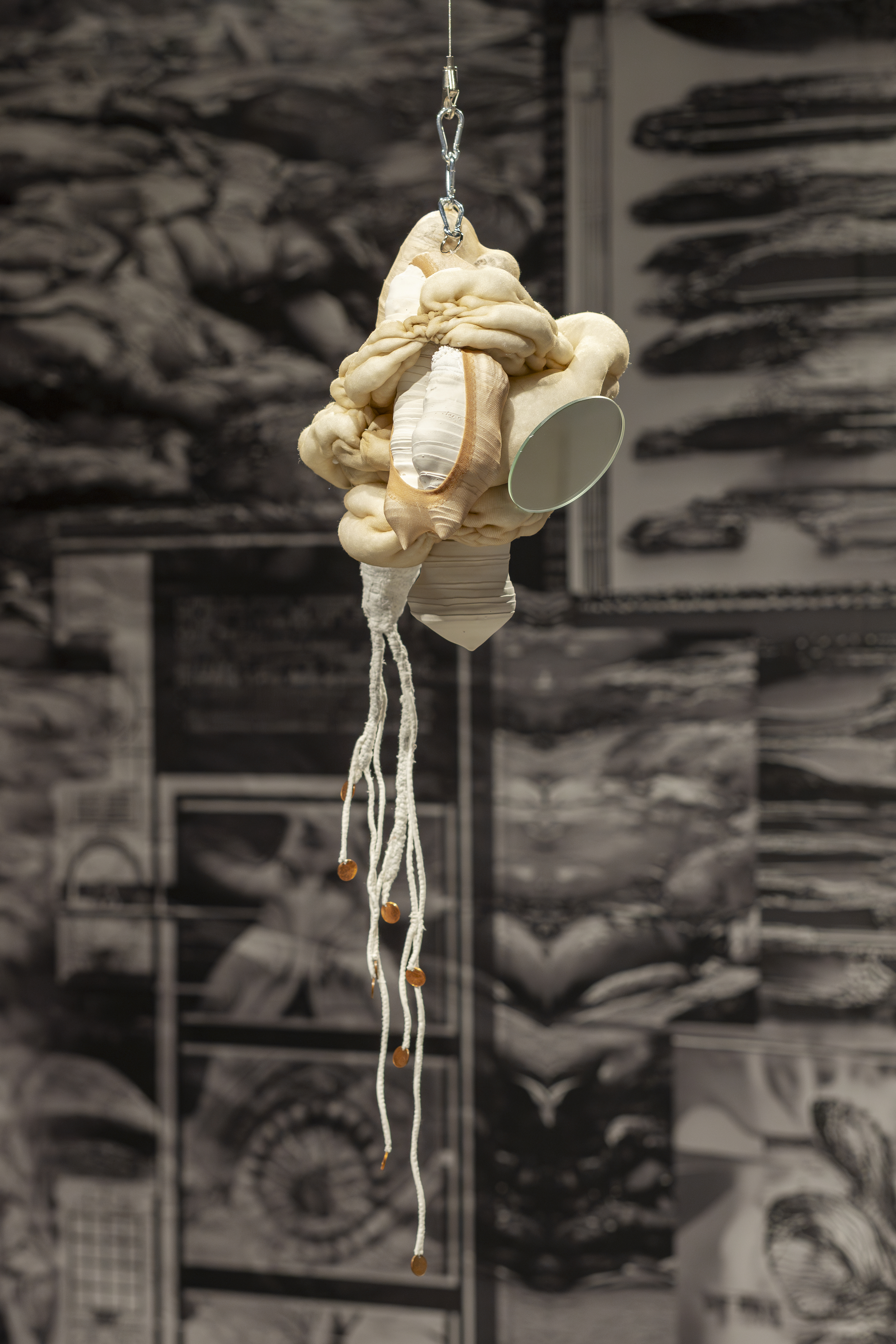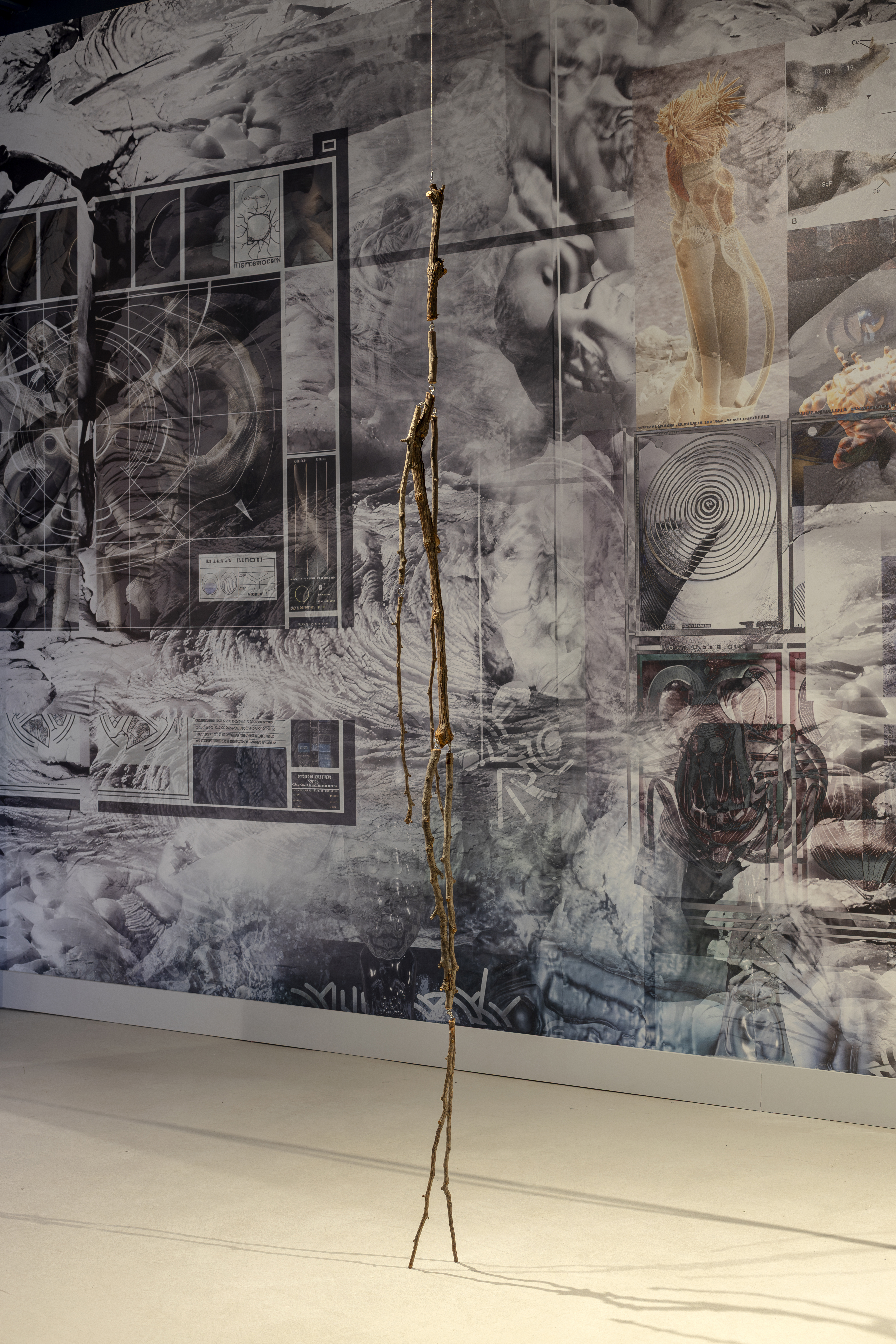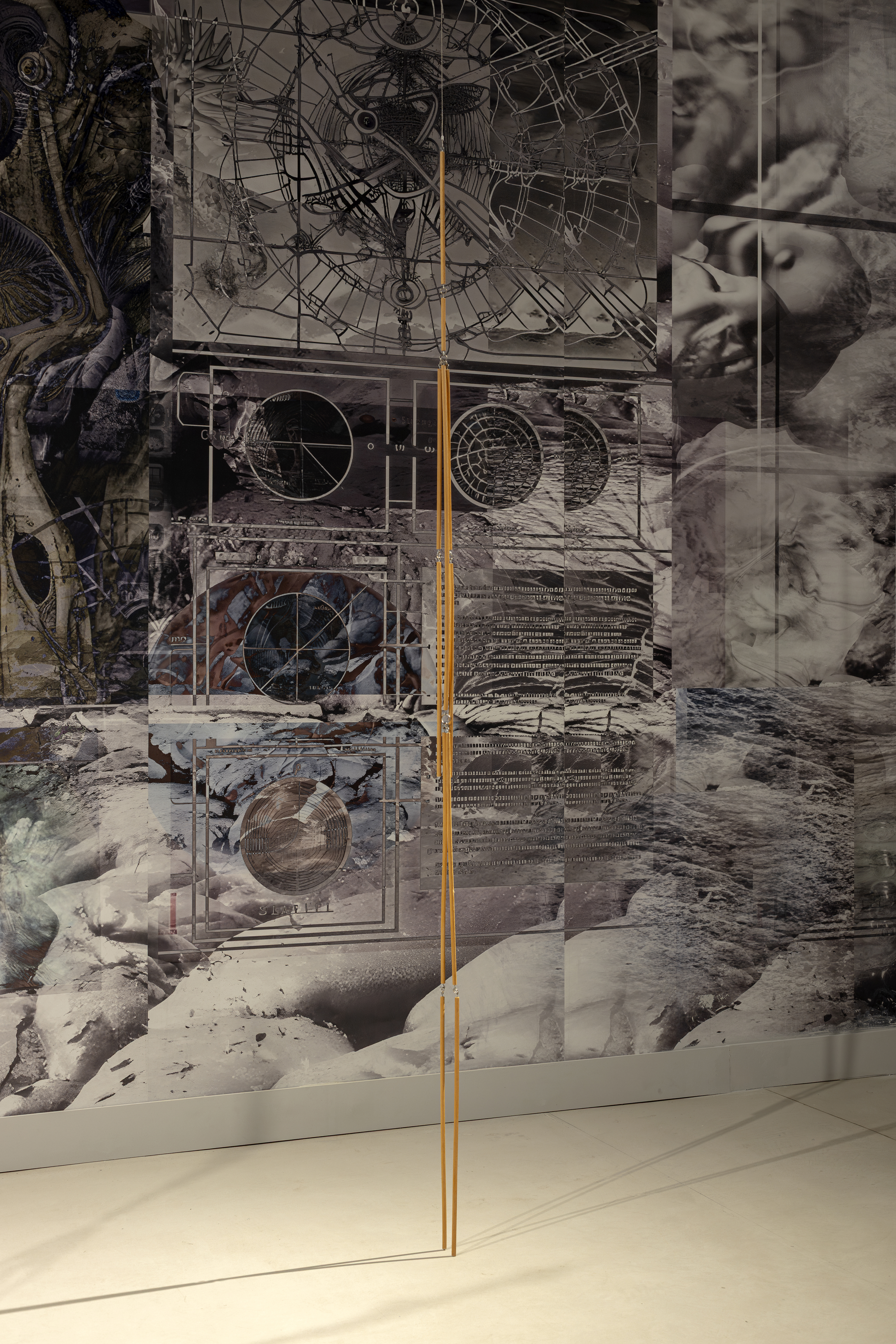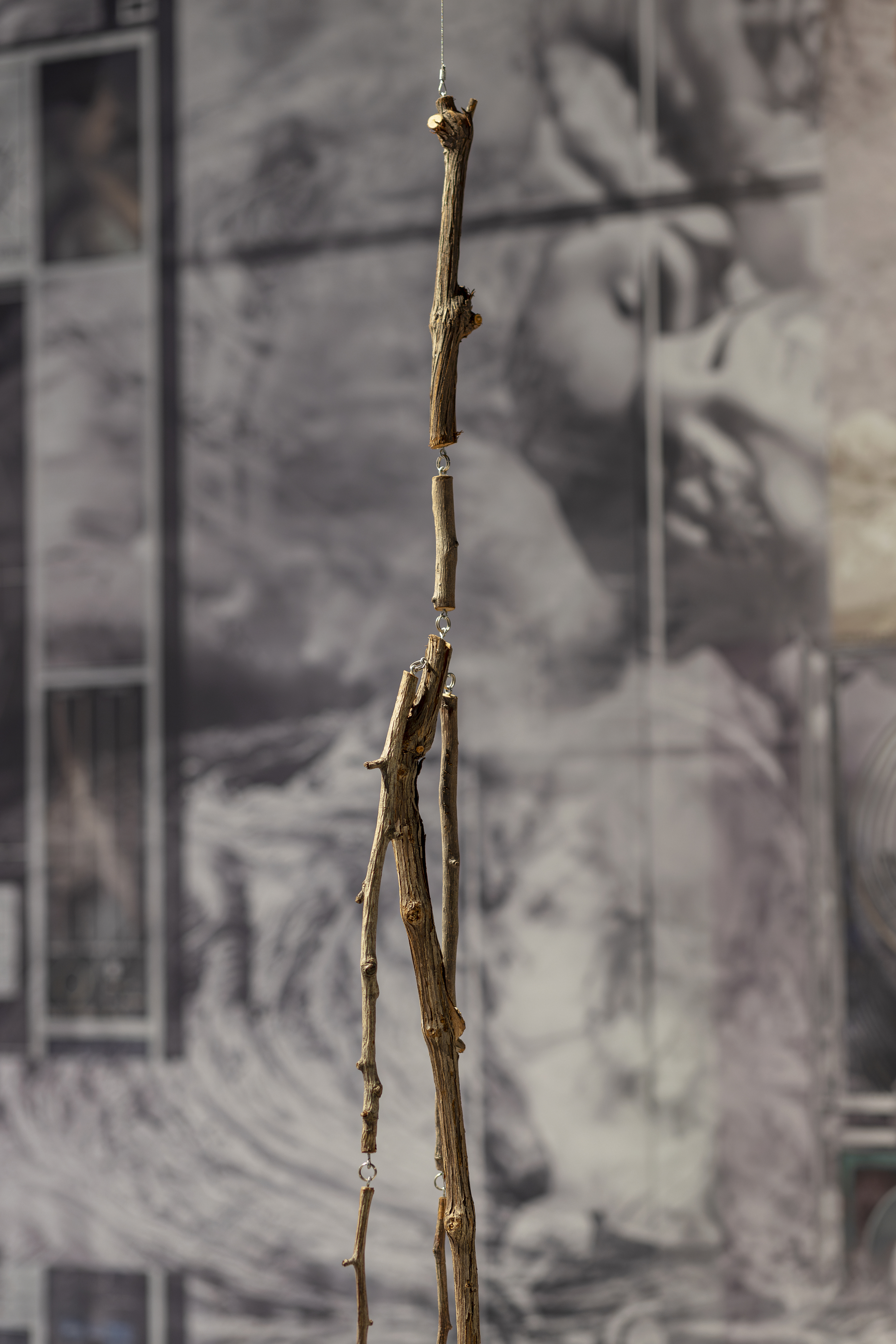Krupa Art Foundation
—
The Neurobiology of Love
Main motivation of The Neurobiology of Love rises out of observation of intertwinement of artistic and scientific ways of imagining and its further imaging, materialization of “subject”. Sometimes it is surprising (even for scientists themselves) how precisely artists portray certain phenomena even from other points of departure and methodology, allowing intuitive and/or automatic, subconscious forces to guide their creative endeavours. The Neurobiology of Love meditates around personal viewing, tacit knowing and chances of embodiment of “undisplayable” / “unspeakable”.
Following Semir Zeki’s pioneering study of neuroaesthetics, The Neurobiology of Love understands production (in-out) and consumption (out-in) of “undisplayable” in the wider net of triggers and consequent processes (of postproduction and distribution). It traces myriads of frequencies of neurosis of creative urge (and self-expression-drive) rising in a vertigo of turbulent times we live in. Neurosis of internet of everything incorporates itself in artistic cosmos of curves, synapses and hatchings, mycelia of drawing, pirouettes of performative act.
The Neurobiology of Love focuses on individual psychological which is influenced by (out-in) and influences (in-out) collective political. It does not matter if consciously, conceptually, strategically, or unconsciously, “spiritually”, poetically, metaphorically, spontaneously¾it does anyhow.
Even The Neurobiology of Love focuses on individual, it understands (micro) individual as unbreakably related (out-in-out) to the other/ness, collectiveness, transindividuality (from passive contagion to active imitation), (macro) globality.
Even The Neurobiology of Love is concentrated to psychological (and mental), it understands it in unbreakable context of somatic. Doing art is a psychosomatic delivery per se. There is something trivial we must remember: eyes do not see anything, they just look, brain sees.
The sub-centre of interest of this project is love¾artists who do art from love (as certainly essential activity of their lives), artists who distribute vibes of empathy, tolerance, solidarity, love as an expression of both intuitive, impulsive affection (according to a particular provoking effect), inclination and systemic, effective engagement. Inclination / affection leads us to crucial decisions obviously. Even democratic elections are dominantly result of personal aesthetical judgment and symbolical action. Neuro-aesthetics plays key-role to understand that dynamics there but art as well.
Body (even reinterpreted both linguistically, philosophically / ontologically… as well as physically ad absurdum) is still here. It is a battleground where Eros remains in chronical dialogue with Thanatos. Love is a knot of synchronous romantic, symbolical, imaginary, abstract as well as corporal, rudimental, erotic, maternal, real… natural and cultural. Love might be “unspeakable”¾but art carries high competence in experimental elaboration of the insight and postproduction of inner (image) to outside. Intersubjective love addresses questioning of the other / otherness. Anyhow, the first other, the initial alien to myself is me. To both maternal and romantic love we can add metabolism of artistic love / creative urge as love.
As Zeki perfectly describes in his essential study, “human attachment seems to employ a push–pull mechanism that overcomes social distance by deactivating networks used for critical social assessment and negative emotions, while it bonds individuals through the involvement of the reward circuitry, explaining the power of love to motivate and exhilarate”. Creation of art as well combines mechanisms of deactivating criticality and pragmaticity to activate free flow from subconsciousness. Real or realistic of arts is not necessarrily mimetic, imitating external objects. Realistic can be visualization of “invisible, immaterial…” feelings. Might be we can say it is not a form of creativity indeed, because artist does not create anything new but describes what is already “there”. Might be we can call it “meta-mimesis".
Speaking about invisible, which does not provide any proof that it is “there”, sometimes it is just transparent; and that’s also why “transparency is a form of darkness” as gloriously described by Thomas Metzinger.
Speaking about intuition, it is very much related to revelation of something “seen” from in- (“in, on”) + tueor (“to look, watch, guard, see, observe”).
Messages what art articulates then to the outside from “there” can be very precise in its own character, and precious. Art’s capability to go beyond explicit language or to dive back to abysses of biosemiotics, to create new languages, not to be limited to any (mirage of) consistency… extremely extents relevant possibilities of description and further communication even of some “unknown”.
The Neurobiology of Love offers insight to selection of artists who work with their individual relation to corporality, humanity, culture, politics and nature in rather implicit and associative way.
The Neurobiology of Love offers the perceiving of works present here behind and beyond poetic to more visceral reading which is no contradiction. Poetic is carnal as well and vice-versa carnal is poetic. Motivation (and crucial motivity as well) of art making is primarily bodily.
Each artist in The Neurobiology of Love follows diverse creative backgrounds, routes and use of media. To following descriptions of each position, we should then always include “amongst many other things”.
Szilvia Bolla does “psychosomatic photographs” which transfer an image to other dimensions and media. These objects which rise out of dealing with complexity of psychical puzzles are following consideration about some healing effects. Reading the “nature” of Bolla’s “flowers” which grow on gut-brain axis and bloom in the gallery space, to fundamental (certainly abiogenetic) trinity of mineral-vegetable-animal one can add -machine.
Joey Holder forms comprehensive cosmological environments of unknown or we can even claim mystical. Her mostly digitally rendered works are hypotheses which test chances of both scientific, technological, magical, philosophical, artistic, human and machine chances and limitations. Here, her work creates all-encompassing biotope of the entire The Neurobiology of Love.
Denisa Lehocká names her ongoing creative activity “breathing”. “Breathing” means that the process of artistic creativity is organic and unbreakable part of her every-day existence. Her spatial intuitive assemblages deal with ways of very intimate personal becoming stretched by cultural and social bonds. Both art and subsistence are hybrid. There is no border between real and abstract here. Similarly to Bolla, pharmacological aspect is important for her practice.
Ursula Mayer produces films based on montage, objects and installations. Even when screening her single film, it always swallows the space and becomes installation of its own. Here, her awarded film Gonda, which is certain “geology of self”, where one traces material sympathies and antipathies in the frame of biopolitics of posthuman, distributes moving image, light and colour as well as provides some soundtrack of the entire The Neurobiology of Love.
Luboš Plný makes “anatomical self-portraits” which are not only surficial but enlighten the deepest darkness of his entire body. His “anatomy” is an image of not only physiology but also apparent energetical radiations and psychic associations. Mind is a body. Body is a mind. His drawings include variety of crude biological material (even ashes of his parents), and always detailed description of time and particular aspects of production.
Iza Tarasewicz constructs modular DNA-like habitats (forests or distributed bodies) which give “life” to other “things”. Those structures which cross borders between interior and exterior (we can say that are “transparent”) deliberate further transformation of those “things” and at the same time it is flexible enough to allow those things to change themselves. Her works question forms of living / survival, co-existence, adaptation and one can even say world-making.
